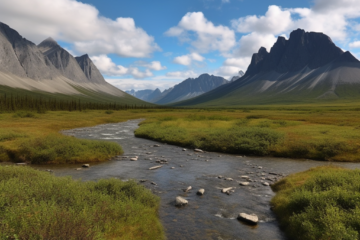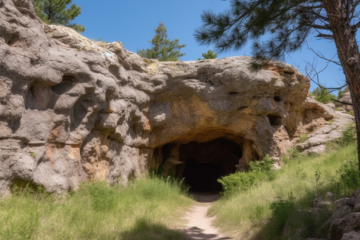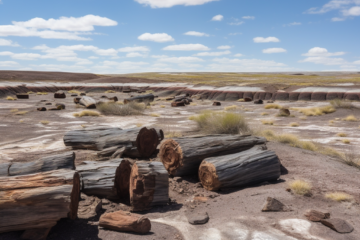If you’re looking for an outdoorsy escape, a camping trip to Biscayne National Park is the perfect way to do it. With its clear blue waters, stunning coral reefs and diverse wildlife, this natural paradise will make for an unforgettable experience.
From choosing the best campsites in the park to understanding all of the necessary regulations you must follow while camping there, we have created a comprehensive guide on everything you need to know about camping at Biscayne National Park. We’ll discuss all of these topics and more as well as provide practical tips for your next outdoor adventure so that you can make the most out of your stay!
Overview Of Biscayne National Park
Biscayne National Park is a stunning park located in southeast Florida. It’s home to the largest living coral reef in North America, hundreds of tropical fish species, and vast sea grass beds. The mangrove swamps are also abundant with aquatic life and provide an excellent opportunity for visitors to observe the amazing wildlife that calls this area home.
The park covers nearly 173,000 acres and is composed of four distinct ecosystems: coral reefs, offshore barrier islands, coastal wetlands and hardwood hammocks, which remain largely untouched by development and offer some of the best camping experiences in South Florida.
Campers can explore an abundance of trails or take part in activities such as snorkeling, kayaking or fishing around the island oases scattered throughout Biscayne National Park. There’s something for everyone at this beautiful corner of paradise!
The park offers several camping options including primitive sites accessible only by boat; developed campsites located on Elliott Key; RV sites with hook-ups on nearby Adams Key and Long Pine Key; as well as tent-only sites on neighboring islands like Boca Chita Key and Elliott Key Harbor. Additionally there are also backcountry campsites available for those who wish to explore further away from civilization.
Camping At Biscayne National Park
Biscayne National Park is located in Miami-Dade County, Florida and encompasses a total area of 173,000 acres. The park is well known for its scenic waterways and diverse wildlife habitats, making it the perfect destination for camping enthusiasts.
When camping at Biscayne National Park, visitors must adhere to certain regulations set forth by the park. For example, all campers are required to have valid permits which must be obtained prior to arriving onsite. It’s also important to note that there are different regulations depending on whether you’re camping with a tent, RV or boat.
For tent campers, two-person tents are allowed as long as they don’t exceed 6 feet by 8 feet in size. RVs are restricted in size up to 15 feet in length and any larger will require approval from the park manager before setting up camp sites. Boaters can enjoy overnight stays but must find suitable anchoring locations without disturbing or damaging coral reefs or other sensitive areas within the park boundaries.
It’s also important to note that no generators or open flames are permitted while camping at Biscayne National Park unless approved by the park manager beforehand. Additionally, check-in time is between 9am – 5pm while check-out time is 11am sharp so plan your activities accordingly!
Camping Regulations
Biscayne National Park requires all campers to obtain a permit prior to camping and abide by certain regulations. There are different regulations for boaters, RVs, and tent campers.
Boaters: Boaters must have their boats moored at least 100 feet away from shorelines in all areas of the park except Boca Chita Key, which has a 50-foot mooring requirement. Boats can be moored overnight within these guidelines but no camping is allowed on board.
RV Campers: RV sites are available for rental at Dante Fascell Visitor Center and Convoy Point Marina. All individuals camping in an RV must follow park rules regarding noise levels (no amplified sound devices or generators permitted after 8 p.m.), as well as proper waste disposal procedures such as the usage of compostable bags for trash collection and dumping tanks only when appropriate receptacles exist.
Tent Campers: Tent campers must stay within designated campsites which vary in size – some will accommodate up to six people while others may hold three or fewer campers per night. It’s important to remember that no ground fires or any kind of burning material is allowed anywhere in the park; instead, propane stoves can be used with caution inside tents for cooking purposes only.
Camping Regulations For Boaters
Boaters have a great opportunity to explore the many coves, bays, and islands of Biscayne National Park. However, there are some regulations in place that must be followed for camping on the water.
Boaters must always use approved mooring buoys or anchorages when camping in the park. Anchoring is limited to two consecutive nights in any one location in the park unless otherwise indicated by signs or markers. If no mooring buoys are available it’s important to properly mark your position with an appropriate buoy and follow all anchoring regulations set forth by Biscayne National Park.
It’s also important to be mindful of other boaters when camping at sea overnight and make sure you’re not blocking access to channels or overcrowding designated areas. You should also keep a reasonable distance from living coral reefs and only swim within marked swimming areas so you don’t interfere with sensitive habitats within the Maritime Heritage Trail Zone.
When cooking meals while out on the water, make sure any fires are kept small and never leave them unattended; always extinguish them before departing for other activities or leaving camp altogether. Make sure all food scraps are disposed of properly away from shorelines too!
Camping Regulations For RVs
Camping in RVs at Biscayne National Park provides visitors with the opportunity to stay close to nature while still enjoying the comfort of a home-on-wheels. When camping in an RV, visitors are subject to all relevant federal, state, and local regulations.
Biscayne National Park requires that all RV campers must register for a campground permit prior to their arrival. This permit includes information on where you are allowed to camp within the park and any special rules that may apply in certain areas. The maximum amount of time one can stay at Biscayne National Park is 14 days in any given month; no more than seven consecutive days can be spent at one site.
RV campers should also be aware of fire restrictions and other safety guidelines when camping in Biscayne National Park. Wood fires are not permitted anywhere within the park boundaries; propane or gas grills must be used instead. All pets must be leashed or securely confined when outside your vehicle, as free-roaming animals inside the park will result in fines or eviction from the premises.
The recommended parking spaces for RVs are located along designated roads throughout Biscayne National Park and follow strict size limitations based on type of vehicle being parked there (i.e., caravans vs camper vans). Additionally, generators must remain off between sunset and 8am daily; only inverter generators may be used during those hours if needed for medical support equipment such as CPAP machines or oxygen tanks/concentrators etc..
Camping Regulations For Tents
Tents are a great way to enjoy the outdoors, and Biscayne National Park is one of the best places for camping. Before setting up camp, it’s important to know what regulations apply specifically to tents.
All tent campers must:
Register at visitor centers or self-registration stations before entering the park.
Choose a site that does not disturb wildlife or vegetation.
Respect other visitors by keeping noise levels down and remaining within designated areas.
Dispose of trash in proper receptacles and never leave food out overnight.
Follow all posted fire regulations including using existing grills and fire pits, if available, for cooking fires instead of creating your own onsite.
Pitch tents only in designated camping areas; tents may be pitched no more than 15 feet from any road or trail, unless otherwise specified at certain sites within the park boundaries.
In addition to these rules, please note that there are specific guidelines regarding pets while camping with a tent: Pets must remain on a leash at all times and owners should make sure they clean up after their pet immediately wherever possible due to potential contamination of water sources located nearby campsites.
Best Places To Camp At Biscayne National Park
Biscayne National Park is a great place for camping with its gorgeous beaches, clear waters, and diverse wildlife. There are several campgrounds located within the park offering everything from primitive tent camping to RV hookups. Here is a brief overview of some of the best places to camp at Biscayne:
Elliott Key Campground: Located on Elliott Key, this primitive campground has both tent sites and picnic tables in an idyllic setting. It also offers access to many recreational activities such as snorkeling, swimming, kayaking and fishing.
Adams Key Campground: This rustic island oasis is perfect for those looking for a unique camping experience with its beautiful beachfront view and spectacular sunsets. It offers both tent sites as well as electric hookups for RVs or trailers up to 50 feet in length.
Long Point Campsite: Located on the northern tip of Long Island, this campsite features stunning views of both land and sea. It boasts amenities such as restrooms with showers as well as RV hookups with electricity and water access that can accommodate larger trailers up to 55 feet in length.
Black Point Marina & Camperland: For those wanting more luxurious accommodations during their stay at Biscayne National Park, Black Point Marina & Camperland offers full service camper sites complete with electric hookups (30/50 amp), cable TV connections, laundry facilities and more!
Things To Do At Biscayne National Park
Biscayne National Park offers a range of activities for visitors to enjoy. Whether you’re looking to get out on the water or explore the park’s many trails, there are plenty of things to do at Biscayne National Park.
Boat Tours – Boat tours offer an up-close view of what Biscayne National Park has to offer. Tour guides will point out wildlife and educate visitors about the ecosystem. Boats can be rented from marinas in nearby towns and cities such as Homestead and Miami Beach, or boat tours can be booked online through local companies.
Hiking – If you’d rather explore the park on foot, there are several hiking trails that traverse different parts of the park. From short walks along boardwalks to longer hikes along inland trails, visitors can find a route that suits their needs. Before heading out on a hike, make sure you check with rangers about trail conditions as some areas may not be accessible due to weather or other reasons.
Fishing – Fishing is another popular activity at Biscayne National Park and visitors must have valid Florida fishing licenses before casting a line into any of the waters within its borders. There are over 60 species of fish living in these waters so anglers should have no problem finding something interesting to catch!
Boat Tours
Biscayne National Park offers a variety of boat tours for visitors to explore the park’s natural beauty. There are a number of tour companies in the area that offer half-day or full-day boat trips, and some even offer overnight camping trips. The tours explore the shallow waters around Biscayne Bay, where you can see colorful coral reefs and diverse species of marine wildlife.
The most popular tour is the guided snorkel and kayak tour, which takes visitors around several islands in Biscayne Bay. Here you can explore the coral reefs up close and search for aquatic life such as sea turtles, lobsters, manatees and dolphins. Some tours also include birdwatching opportunities near mangroves or stop at an island beach for lunch or swimming before continuing on their journey.
For those looking to explore deeper into Biscayne National Park there are twilight kayak tours which visit remote areas accessible only by watercrafts like kayaks or paddleboards. These areas provide excellent views of nature with plenty of birds singing in the evening air and starlight reflecting off still waters creating an unforgettable experience for anyone lucky enough to take part in it!
Boating is one of the most popular activities here at Biscayne National Park so make sure to check out all the options available before your trip!
Hiking
Hiking is one of the most popular activities in Biscayne National Park. With miles of trails and scenic overlooks, the park offers exceptional opportunities to explore nature. There are two main hiking areas within the park: Boca Chita Key and Elliott Key.
The trails at Boca Chita Key are short but offer stunning views over the surrounding waters. The Elliott Key trail circles the island, with interpretive signs along the way providing information about local fauna and vegetation. Both hikes can be completed in a few hours or less depending on how long you want to spend enjoying your surroundings.
It’s important to follow safety guidelines when hiking in Biscayne National Park, including bringing plenty of water and sunscreen as well as wearing closed-toed shoes for protection from insects or sharp rocks or sticks on the ground. Make sure to stay on marked paths and respect wildlife by keeping a safe distance from animals you may encounter such as raccoons, snakes, or alligators – these should be admired from afar!
Before heading out on your hike, check with rangers for any special restrictions that may be in place due to weather conditions or other factors that could affect your experience. Finally, remember to take out whatever trash you bring in so that others can enjoy a pristine environment while exploring this beautiful natural space!
Fishing
Fishing is a popular activity in Biscayne National Park due to the diverse marine life found in the waters. There are plenty of areas for anglers to try their luck, including shallow-water flats, mangrove islands, and offshore reefs.
The park has specific regulations for fishing on its waters which must be followed at all times:
Fishing is allowed only with a valid fishing permit
A size limit of 12 inches applies for all species except tarpon, cobia and snook
Spearfishing is not permitted within park boundaries
All harvested seafood must stay within the bag limit set by state regulations.
It’s also important to remember that some areas of Biscayne National Park are closed off from fishing due to being designated as Research Natural Areas or Wildlife Refuges. Anglers should always check with park rangers before heading out onto the water.
Tips For Camping At Biscayne National Park
Camping at Biscayne National Park is an exciting and rewarding experience, but there are a few important regulations to be aware of. All campers must follow the rules set out by the park to ensure everyone’s safety.
Campfires: Avoided in most areas due to extreme heat and dry conditions, however they are still allowed in designated camping areas with proper precautions taken.
Pets: Pets must remain on a leash or enclosed cage/container while on trails or near any wildlife habitats. Pets are not allowed overnight in cabins or any other designated shelters, and may only stay within 100 feet of your campsite during their visit.
Alcohol: alcohol is prohibited from all park trails and natural sites. It may be consumed within designated camping areas provided it does not disturb other visitors or create excessive noise levels.
Littering & Firewood Collection: Littering is strictly prohibited as well as collecting firewood from the park – all firewood must be purchased prior to entering the grounds.
It’s also important for campers to take preventative steps such as storing food properly (in sealed containers) and keeping food sources away from campsites, especially when bears frequent nearby trails or riverside areas during certain times of year (typically summer months). Follow these tips for hassle-free camping!
Conclusion
Camping at Biscayne National Park is a great way to explore the park and its many wonders, including the stunning coral reefs and mangrove forests. To ensure that you have a safe and enjoyable experience, it’s important to familiarize yourself with the camping regulations of this park before embarking on your adventure.
Campers are required to obtain a permit for both tent camping and RV/boat camping in Biscayne National Park. Permits must be obtained either online or in-person prior to arriving at the park. All campers must adhere to all rules regarding activities within the campsite, as well as any additional restrictions that may apply based on their specific form of camping, such as boaters or RVs.
When picking out your campsite, be sure to check out some of the best spots Biscayne National Park has to offer like Elliott Key! This spot offers incredible views from atop its cliffs overlooking Elliot Key Harbor plus you can enjoy plenty of swimming opportunities along its shoreline too!
In addition to enjoying all that nature has offered while camping at Biscayne National Park, there are many other activities you can take part in such as boat tours, fishing trips or hikes through various trails around the island–all things we highly recommend trying during your stay here! Finally don’t forget our last tip – make sure you plan ahead so you’re not caught off guard when it comes time for packing up your campsite so everyone enjoys their time safely throughout their trip!


